So, I often go along to these things, and am moved to tears – then forget the pieces that captivated me. This is mainly to serve as a visual recall for my own reference. Added is the bonus that there are a few of you reading who may not have gotten to see this at all, and this is but a glimpse.
These are the pieces I had a deep visceral reaction to. The story, the emotion, the light. The inspiration.
It was the last day today – and I’ve never ever seen the Gallery so crowded.
It was worth all the queues.
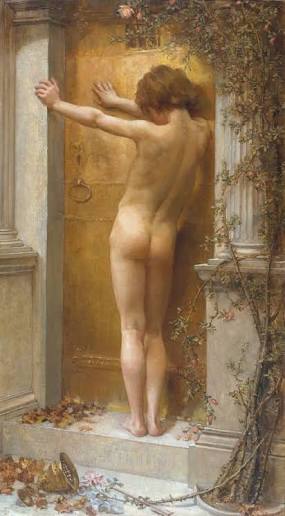
LOVE LOCKED OUT
Anna Lea Merrit (1890)
Gallery label, July 2004
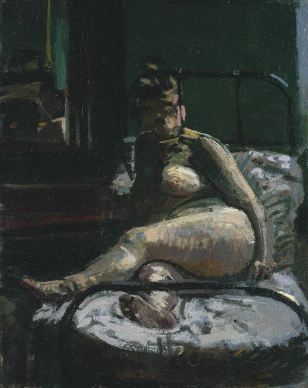
LA HOLLANDAISE
Walter Stickert (c. 1906)
Stickert wanted to show the naked female form without idealisation. This is one of several paintings showing a naked woman in poor surroundings: on an iron bed in a dimly-lit room. The painting does not reveal the woman’s identity, but the title (‘The Dutch Girl’) may refer to the nickname of a prostitute in a novel by the 19th-century French author, Honoré de Balzac. The seedy feeling of the painting is reinforced by Sickert’s handling. The brush marks form a surface so rough that, if you look at it closely, the image seems to fragment.
But then, ranking higher on google is the link (or suggested) theory that this artist was one of the most notorious serial killers..
https://www.theguardian.com/artanddesign/2001/dec/08/art.artsfeatures
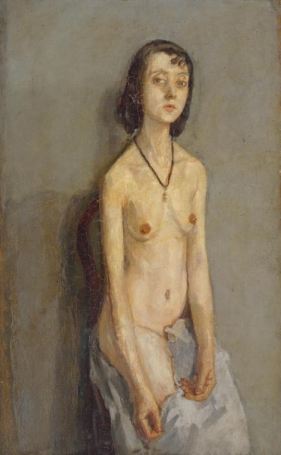
NUDE GIRL
Gwen John (1909/10)
The human body, a traditional theme in western art, was a tricky subject for women artists at the turn of the century because of questions of morality and decorum. By using a narrow colour range and minimal setting, and suppressing biographical details, John draws attention to the naked body. At the same time, the character of the model, Fenella Lovell, comes across powerfully. So the viewer experiences this painting, disconcertingly, as a portrait of a contemporary woman with no clothes on, who seems to be uncomfortable that we are looking at her.
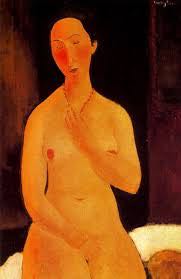
SEATED NUDE WITH NECKLACE
Amedeo Modigliani (1917)
Famous for his elongated portraits and lush nudes, Italian born, Parisian-based artist Amedeo Modigliani’s interest in African masks and sculpture is evident in the treatment of his models’ faces – flat and mask-like, with almond eyes and twisted features. His graceful figurative distortions and large flat areas of color were strongly influenced by Cezanne. Modigliani also developed decorative arabesques. He died at age 35 of tuberculosis accelerated by excessive drinking, drugs, and poverty.
*This was where I actually cried sobbed.
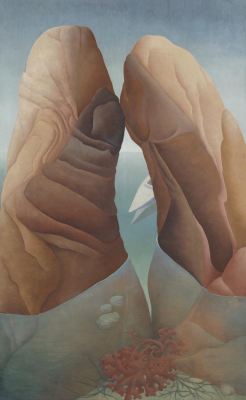
SCYLLA
Ithell Colquhoun (1938)
Colquhoun wrote that the title of this work refers to the female monster who, according to the ancient legend in Homer’s Odyssey, inhabited narrow straits and devoured passing sailors. Yet there is also strong sexual and feminine symbolism at play in this work. As Colquhoun explained, ‘It was suggested by what I could see of myself in a bath…it is thus a pictorial pun, or double-image’. Produced during Colquhoun’s transition from magical realism to surrealism, this painting is one of her most introspective.
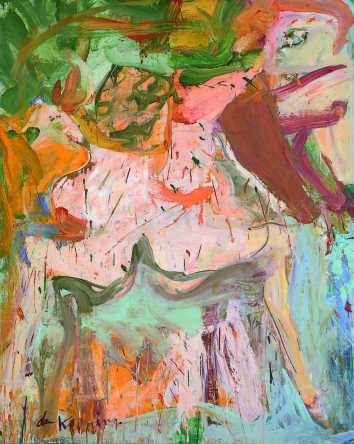
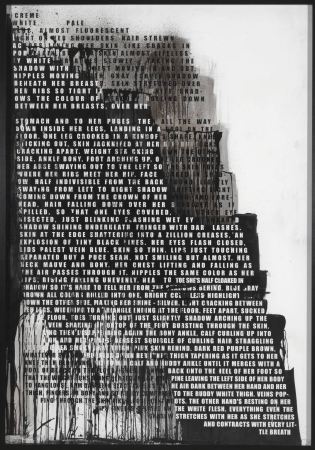
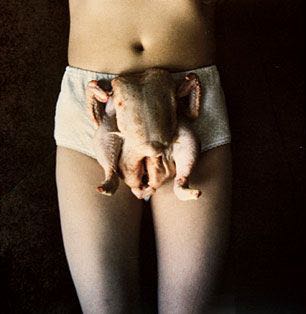
THE LAST THING I SAID TO YOU WAS DON’T LEAVE ME HERE II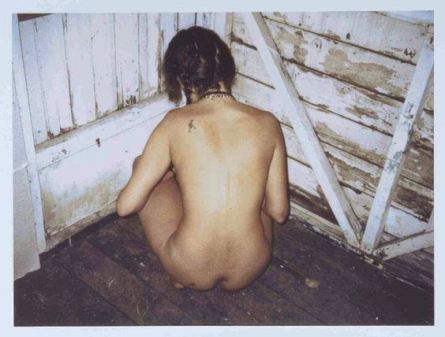
Tracey Emin (2000)
This photograph, which was published in an edition of six, is a self-portrait of the artist sitting naked on the floor in the corner of a beach hut. Her back is to the camera and she leans slightly forward. A small tattoo of a scorpion is visible on her left shoulder blade. Thick gold necklaces glint at the nape of her neck. Her pose recalls the vulnerable, dejected figure of a punished child. Paint is peeling from the walls of the empty hut, giving it a ramshackle appearance which heightens the mood of pathos.
Emin bought the beach hut in Whitstable, Kent with her friend, the artist Sarah Lucas (born 1962), in 1992. Emin used the hut as a weekend retreat, going there with her boyfriend. She has talked about the importance of owning property for the first time, saying, ‘I was completely broke and it was really brilliant, having your own property by the sea’ (quoted in Lobel). In 1999, she transported the hut from the beachfront to the gallery, titling it The Last Thing I Said to You is Don’t Leave Me Here (The Hut), 1999 (Saatchi Gallery, London).
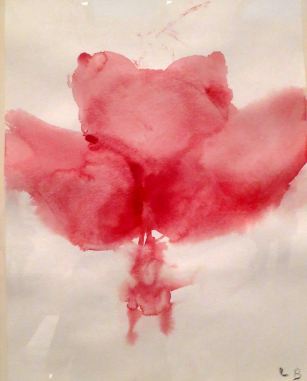 BIRTH
BIRTH
Louise Bourgeois (1994)
Much of Bourgeois’ work is autobiographical, and relates to her traumatic childhood. She idolised her mother, and loathed her overbearing, adulterous father. Bourgeois made her first prints in the 1940s and, after a gap of about forty years, returned to printmaking in 1990. Frequently child-like in style, these works portray the events and fantasies of her childhood and adolescence. The scenes include the trauma of birth, the pubescent discovery of the body, the moulding of a daughter by her mother, and the stifling of a daughter by her father.
WILD MAN
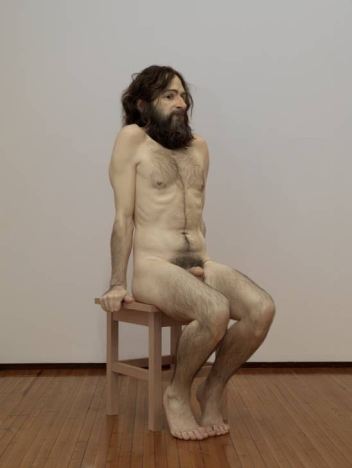
Ron Mueck (2005)
Wild Man is a sculpture by Australian artist Ron Mueck of a large naked man sitting on a stool. The man has a light skin tone and is represented with a high degree of realism apart from his scale, which is larger than life-size. Measuring nearly three metres in height in his seated position, the man sits on the edge of a wooden stool with his back and arms straight and his hands gripping the sides of the stool. His shoulders are raised up to his ears while his toes press into the floor with his heels elevated. The man has long brown unkempt shoulder-length hair and a dark bushy beard. His body is brushed with hair, including his chest, arms, legs and genitals. The man looks slightly downward to the right with his face contorted in a tense expression.
Wild Man is made from polyester resin, fibreglass, silicone, aluminium, wood and synthetic hair. It was made in 2005 according to the same method Mueck consistently employs to create his sculptures. The artist begins with drawings before creating small clay or plaster maquettes to refine his ideas. The maquettes are gradually scaled up to create a full-sized, detailed clay model of the work. From this clay model Mueck creates a series of mould sections in order to cast the sculpture in fibreglass. The fibreglass sculpture is then painted and hair is applied. Although the artist tends to use real hair for his smaller figures, for Wild Manacrylic fibre hair was used. The last detail added to the sculptures are the eyes. Like all Mueck’s sculptures, Wild Man is rendered with hyper-realistic detail, noticeable from the texture of the skin to the careful placement of individual hairs. Before working as an artist Mueck was a puppet and prop maker for television and film, where he developed his precise techniques.
Mueck initially planned to make a figure who appeared confined, as if backed into a corner, but decided to make Wild Man after seeing an illustration of the colossal stone sculpture Appennino 1579–80 (Villa di Pratolino, Vaglia, Italy) by the late Renaissance artist Giambologna. Appenninodepicts a crouching hirsute river god, which inspired the oversized hairy ‘wild man’ of Mueck’s sculpture. The critic Anne Cranny-Francis notes that a wild man tends to be a reclusive individual afraid of human society and that this ‘might explain why [Mueck’s] large male figure – in one sense, the very image of the powerful white male – grips his chair, body rigid with tension, and stares over the heads of viewers in a paroxysm of fear’ (Cranny-Francis 2013, p.6). The man’s nakedness adds to this sense of vulnerability, making him both physically and emotionally exposed.
Mueck’s sculptures frequently experiment with scale. Some works are smaller than actual size, such as Spooning Couple 2005 (Tate AR00033), while others, including Wild Man, are much larger than life-size. The artist has noted that he never makes life-size figures because ‘it never seemed to be interesting. We meet life-size people every day … It [the size of the sculptures] makes you take notice in a way that you wouldn’t do with something that’s just normal.’ (Quoted in Tanguy 2003, accessed 10 December 2014.)